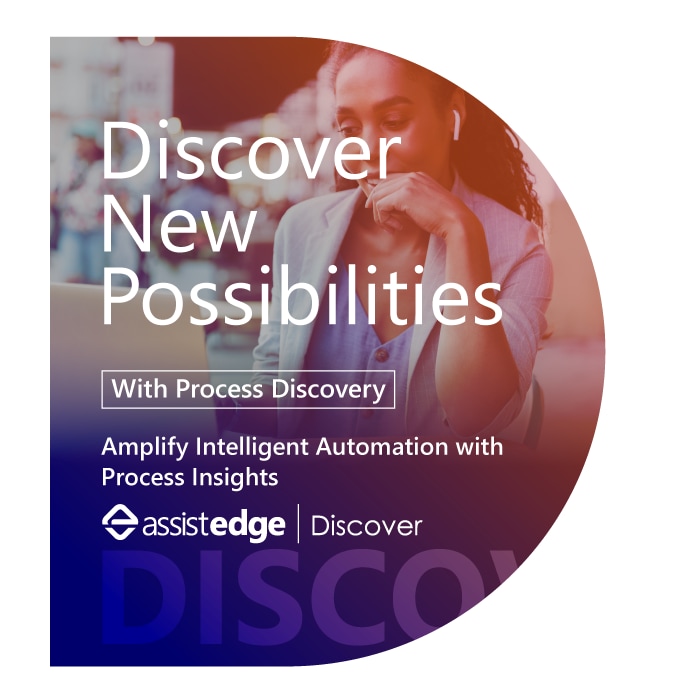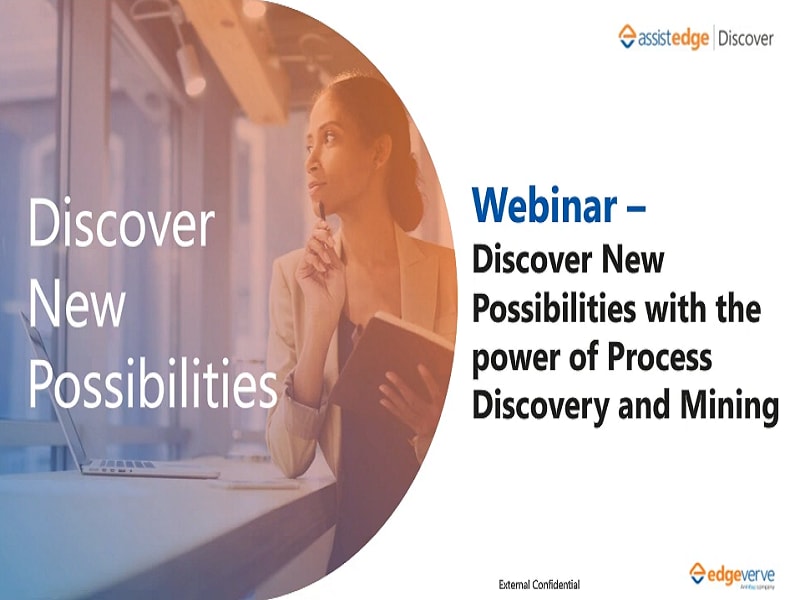All About Process Discovery
Enterprises worldwide are going through a digital transformation and are adopting Automation to enhance their business processes. Process Discovery tools guide them in choosing the right and relevant processes to automate and maximize the value of automation.
What is Process Discovery?
Process Discovery can be defined as a set of tools and techniques that are used to define, map and analyze the processes of an organization.In a typical enterprise, processes that were initially well defined.
Process Discovery tools are machine learning-based tools that help organizations identify business processes, record all possible variations using machine learning algorithms and make recommendations for Automation. Not only do Process Discovery tools distinguish business processes that can be automated but also help design Automation workflows, making the mapping, planning and implementation of Automation quicker and more efficient.
Process Discovery – How does it work?
At the basic level, process discovery tools allow organizations to view, analyze and map the underlying structure and processes form the day-to-day operations. A top down hierarchical process along with bottoms-up analysis allows these tools to create a comprehensive process map, which complements Business Process Analysis (BPA).
Automated Business Process Discovery tools capture data and transform them into a structured dataset for diagnosis by either experts or AI. Repetitive actions from users are grouped into meaningful events and a process model is proposed for analysis.
To be specific, Process Discovery bots monitor an organization’s business processes for a specific period. They run on employee machines in a non-intrusive way, without hampering daily work and collecting data on how the employees use various applications to perform their tasks. Advanced ML algorithms then analyze the data, generating Automation workflows that can be moved to an automation tool for a seamless Automation journey.
Accelerating & Amplifying your Digital Strategy with Process Discovery Download Whitepaper
What are the benefits of Process Discovery?
Most businesses are either unsure of where to start their automation journey or are not well-equipped to overcome the hurdles they might face during implementation. Process Discovery provides these organizations with a fast, reliable and cost-effective way to identify the ideal processes for RPA and to continue automating additional tasks.
Process Discovery reduces the manual effort needed for large-scale process identification and mapping all the possible process variations and exceptions. It also helps create an effective Automation blueprint, bringing transparency and eliminating human bias and avoids potential errors and pitfalls through smarter exception handling. It is also cost-effective as it leverages the potential of AI for an integrated approach to maximize the business process outcome.
Improved Quality and Performance: Powered by empirical data, Process Discovery provides a clear picture by automatically identifying, analyzing and determining tasks and priorities for automatable processes, rather than depend on how employees/consultants think they should be performed. It is much more accurate and ensures up-to-date process workflows, deeper understanding, and enhanced process optimization, without any guesswork and human bias.
Visibility: Process Discovery ensures there is visibility of ownership for specific process steps, as well as overall process across the organisation. With a complete map of the processes, enterprises can easily identify new pathways and future automation opportunities.
Less Risks: Giving fewer people access to business process information, it is possible to trim down risks. Moreover, process maps help to understand if the suggested changes will add value to the business, instead of a wait-and-watch method that consumes a lot of time, cost and effort.
Cost Efficiency: Process Discovery enables a measurable way for business improvements, avoiding unnecessary repetitions or other inefficiencies. Also, with less human resources needed, the automation implementation costs go down significantly.
Improved Scalability: Scaling a RPA implementation requires data analysis that takes significant time if done manually. But with the insights generated through Process Discovery, organizations can make intelligent decisions on which processes to automate next. It ensures the automation solution evolves to unlock further growth and performance with minimal use of resources and time.
Maximized ROI: Empirical data-based business process maps help enterprises navigate their Automation journey from value creation to realization. The business process maps created by capturing user key strokes, cover all process exceptions and variations, and provide visibility and options to scale. This helps in maximizing the expected ROI from the Automation program.
Competitive Advantage: Gartner claims that over 80% of companies are still using manual process mapping and switching to Process Discovery would mean enterprises get an edge over their competitors with reduced up-front costs and significantly faster time to realize ROI.
Maximizing Automation ROI with Process Discovery Download Whitepaper
Why must one choose Process Discovery over Process Mining?
Process Mining is a conventional way of process identification from applications used in an enterprise. Process Mining software read system event logs and apply sophisticated algorithms to automatically identify and map business processes. These tools along with user and SME interviews are used to generate business process maps for enterprises to use for analysis and automation.
Since Process Mining applications read data from system events and not user level activity tasks, they fail to capture all the nuances of the human and system interaction. Business process exceptions and variations are also not reliably covered by this approach. The process maps generated from Process Mining, though really useful, form a weak basis to realize a successful Automation ROI.
Additionally, in an enterprise, business processes span through multiple systems and applications. They are interconnected in myriad ways and it is essential to understand their interdependencies to craft a powerful Automation strategy. Since Process Mining doesn’t capture task level data, the business process maps end up not representing the full complexities of business processes.
Process Mining tools are also separate from a RPA solution and hence an enterprise would have to look at integration between RPA and Process Mining tools to align two vendors for an efficient output. This integration and the inefficiencies associated with it increases the time to value realization of an Automation implementation.
The below table summarizes the difference between process mining and process discovery at strategic and execution level.
| S.No. | Criteria | Process Mining | Process Discovery |
|---|---|---|---|
| 1 | Compatibility with all software applications | Not compatible with all software applications | Compatible with most software applications |
| 2 | Data capturing intensity | Data and insights not at a granular level to derive automation insights | Captures task level data that is more automation ready |
| 3 | Human Bias | Doesn’t eliminate human bias and inefficiencies fully | Based on empirical data and effectively eliminates human bias and errors |
| 4 | RPA integration | Requires additional integration between RPA and process mining tools | Tools like AssistEdge Discover enable easy automation from the mapped data |
| 5 | Functional automation | Not effective for functional automation workflows | Complete functional automation workflows |
| 6 | Time factor | Extremely time consuming, might stretch for months | Can be done within couple of weeks |
For most enterprises, difficulties in realizing the full value of its automation programs –start with acquiring an accurate and comprehensive mapping of all their business processes. While Automation and AI technologies are empowering enterprises to identify, analyse and automate the right processes automatically, most enterprises still use conventional tools such as Process Mining to identify and analyse processes to automate. Traditional Process identification methods are extremely time-consuming, prone to bias and disagreement, and bring in a certain degree of risk. This calls for a solution that can automatically identify, analyse and recommend what processes your company must Automate. Process Discovery results in more accurate and deeper understanding of processes, eventually enabling maximum process optimization for a business. It shortens the path to value for RPA, making it the first essential step towards RPA success.
AssistEdge Discover
AssistEdge Discover unlocks the hidden business value trapped in your processes. It acts as a powerful foundation for enterprises seeking cutting-edge technology, to drive intelligent automation and process excellence. From non-intrusively capturing human-machine interactions to leveraging AI to creating actionable process insights, AssistEdge Discover sets you on the right path to embrace continuous improvement with relentless focus on creating a hyper productive enterprise.



